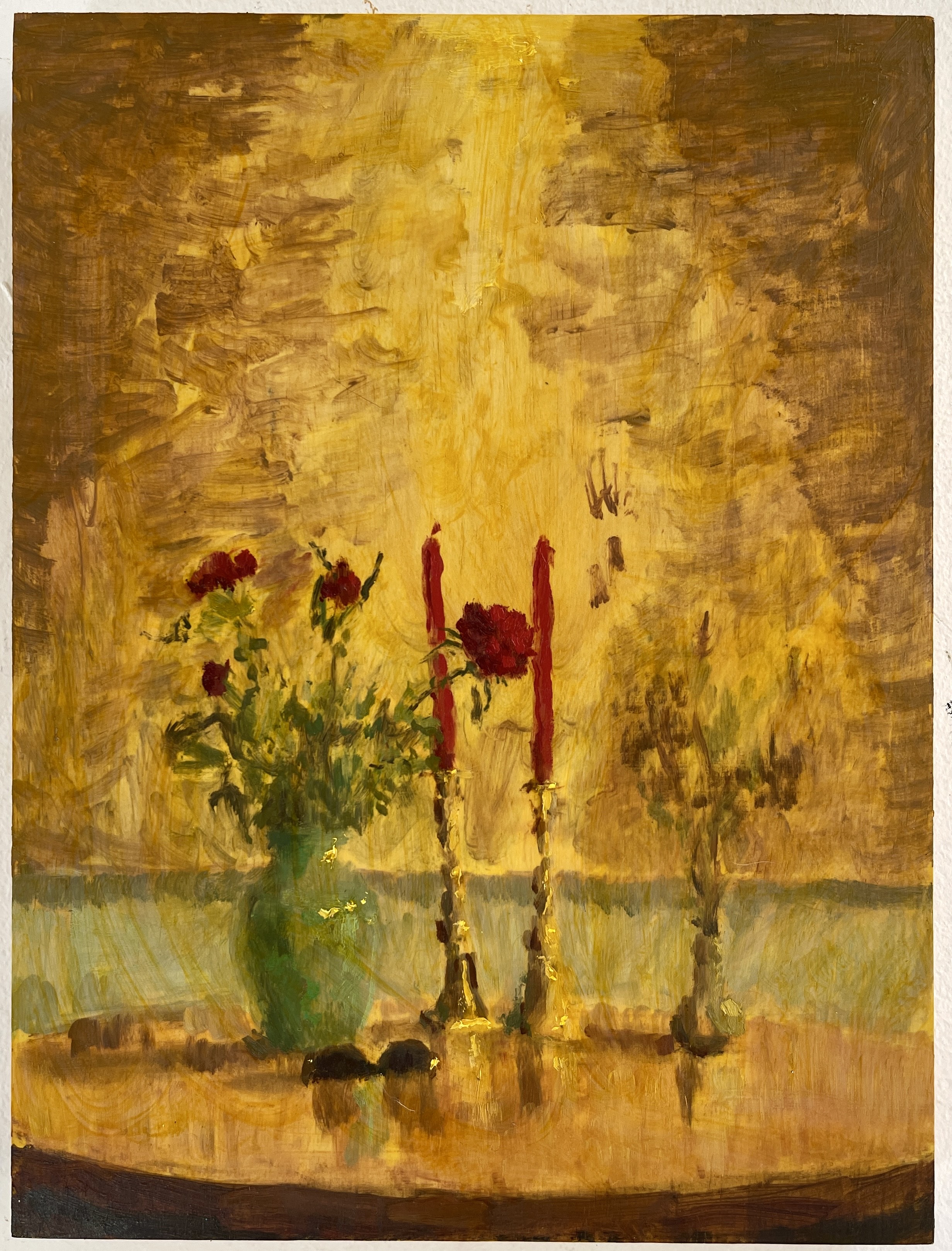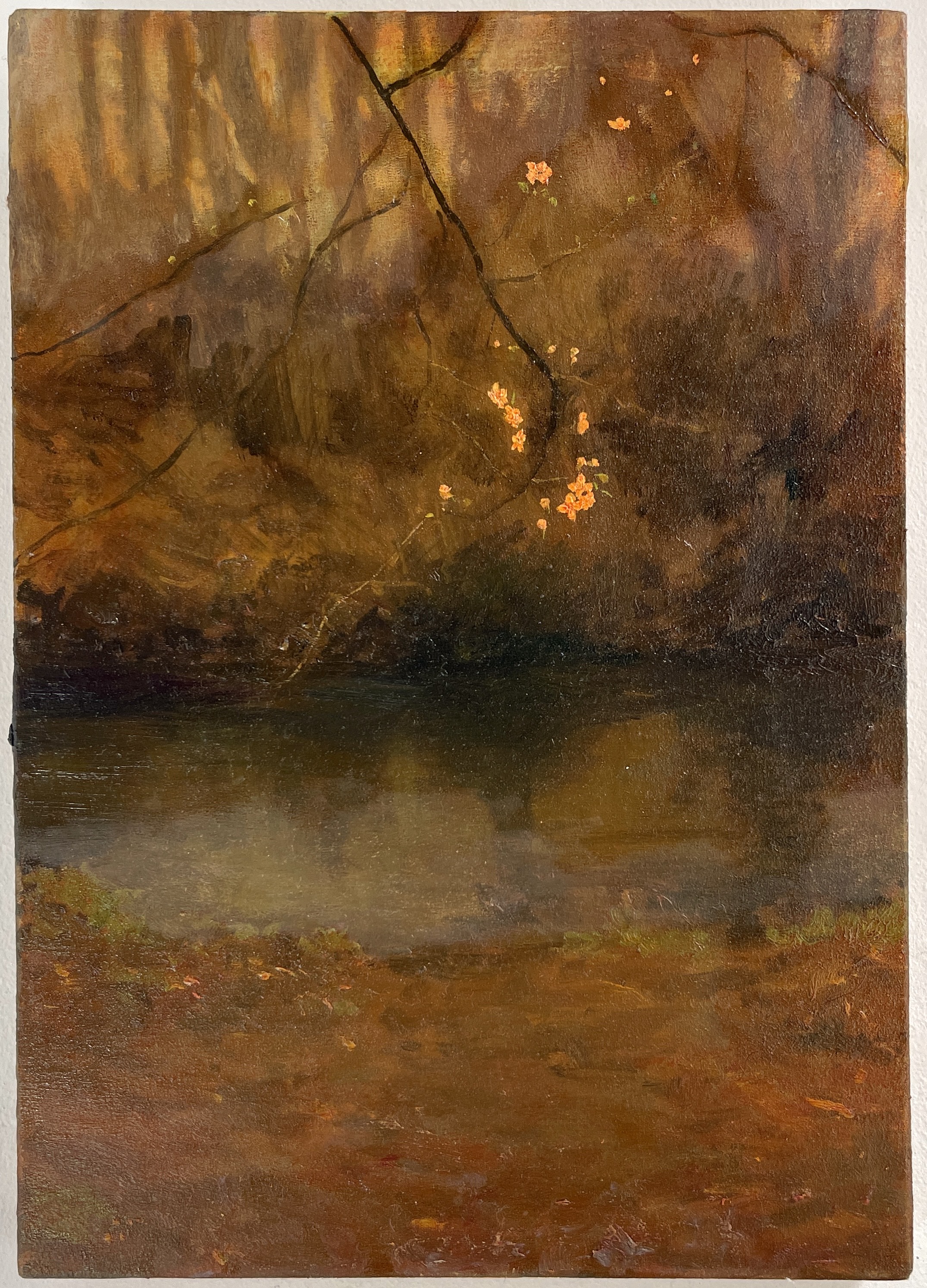Group Exhibition of UK Artists: The Way We Live Now

In an era defined by digital saturation, climate anxiety, and shifting social contracts, how do we navigate the texture of daily life? Five London-based artists' works capture the particular quality of being alive in 2025 - the simultaneous hyper-connectedness and isolation, the blend of virtual and physical realities of a post-pandemic age, and the quiet moments of resistance and contemplation that define our current moment. This group exhibition with Sun Gallery explores the notion that while we may strive for a cohesive vision, our reality often consists of fragmented experiences that reflect the complexities of modern existence.
Thomas Cameron's dream-like urban scenes occupy that threshold space between the everyday and the extraordinary. Depicting London's liminal spaces, the artist taps into archetypal experiences of alienation, searching, and connection. In Fast Food Workers, we see figures at work, coming together yet strangely isolated in an everyday, mundane room of the fast food restaurant. The cinematic, moody compositions convey a dreamlike quality as Cameron shows us a selection of understated, fleeting moments in urban life that are often overlooked.
.jpg)
Pato Bosich
Omphalos River, 2025
Oil on canvas
160 x 183 cm

Pato Bosich
Dream of the Cave III
Oil on board
46 x 46cm
Omphalos River takes Pato Bosich's London into a new realm of vision, where the maelstrom, spiral, and water vortex appear, embodying the hermetic principle "as above, so below." Born from the artist's mythical narratives and countless walks through the city, the river bend around Rotherhithe mingles with architectural elements from various London locations. The historic Mayflower pub appears as an actual raft, evoking the Pilgrim Fathers' departure from this same place.
Dream of the Cave III transforms the artist's studio into both a treehouse and water mill—spaces of transformation and creative metamorphosis. Elements from the actual studio are reimagined and relocated beyond London to wherever the artist travels in his imagination. The studio, with its window, table, and sacred circle of creation, becomes a portable sanctu-ary that moves with the artist's vision. This represents the coming together of two different realities: the physical workspace and the realm of imagination.
Together, these artists represent a distinctly contemporary voice: multi-cultural, literature-influenced, intimate yet universal. They paint not the iconic London of postcards but the London you inhabit daily—its light, its corners, its psychological spaces, its ongoing stories of arrival and belonging. Their work suggests that the most profound artistic statements emerge not from distance but from sustained attention to what is closest at hand. These contemporary painters transform the immediate and overlooked into something both deeply local and universally resonant. They are artists who have learned to read their world closely, and in doing so, reveal the poetry inherent in proximity itself. They prove that the most profound art can come from the closest, most familiar territory – if you look with a poet’s eye, and listen carefully.

Sebastian Espejo
Table with glasses & river painting, 2025
Oil & wax on calico
30.5 x 22.9cm

Sebastian Espejo
Red City, 2024
Oil & wax on calico
30 x 42cm
A sense of solitude and stillness is evoked through the delicate everyday scenes of Sebastian Espejo, where the overlooked and ordinary become thresholds to something else. The artist's studio becomes a starting point. Coming from the other side of the world, from Chile, it took Espejo over a year to feel comfortable with London's light. Clouds move quickly in England, and the vegetation varies dramatically according to the seasons. The artist's still lifes capture the essence of this transience through his observations of everyday scenes. The spaces he portrays seem alive with the promise of a small microcosm of life, a kind of portable sanctuary in an otherwise busy, technological world, as in "Table with Glasses & River Painting". The absence of people invites us to create our own storytelling, as if a stage has been set and awaits its drama.
